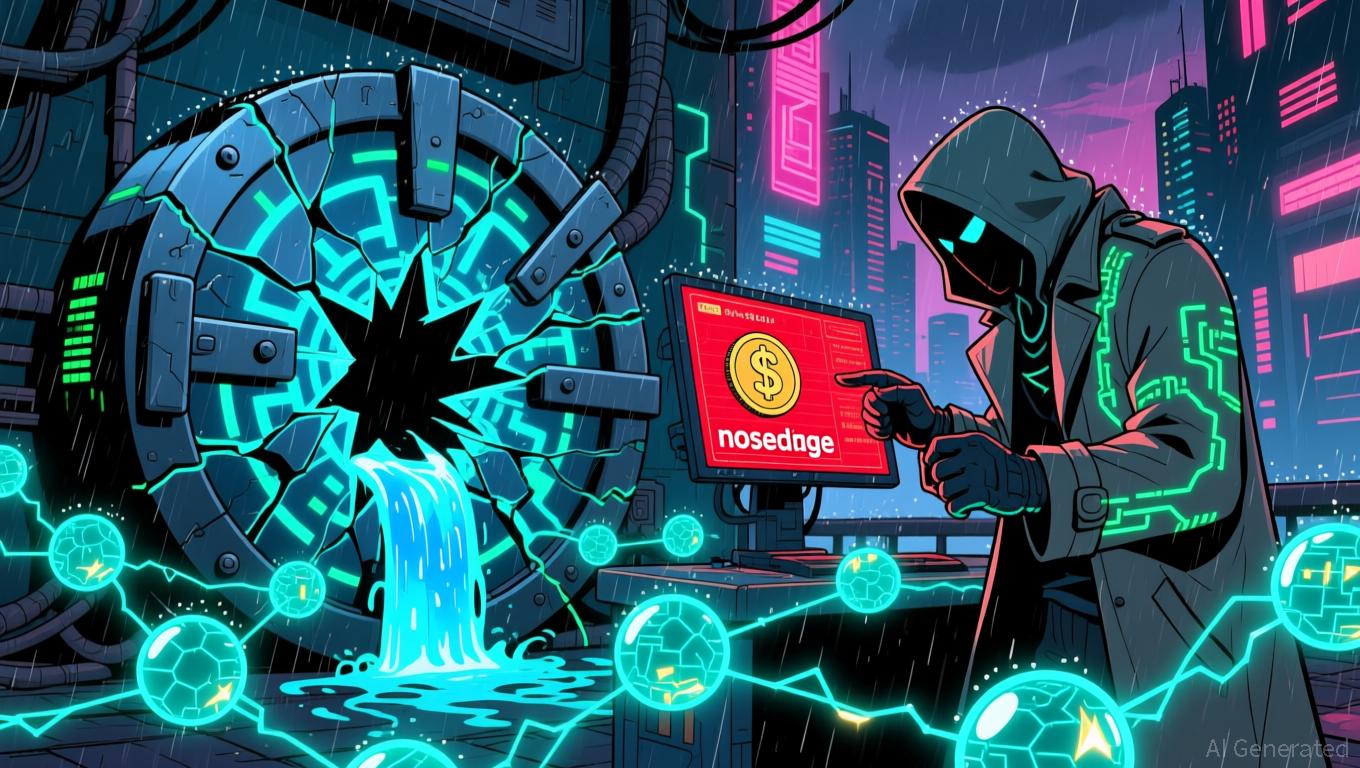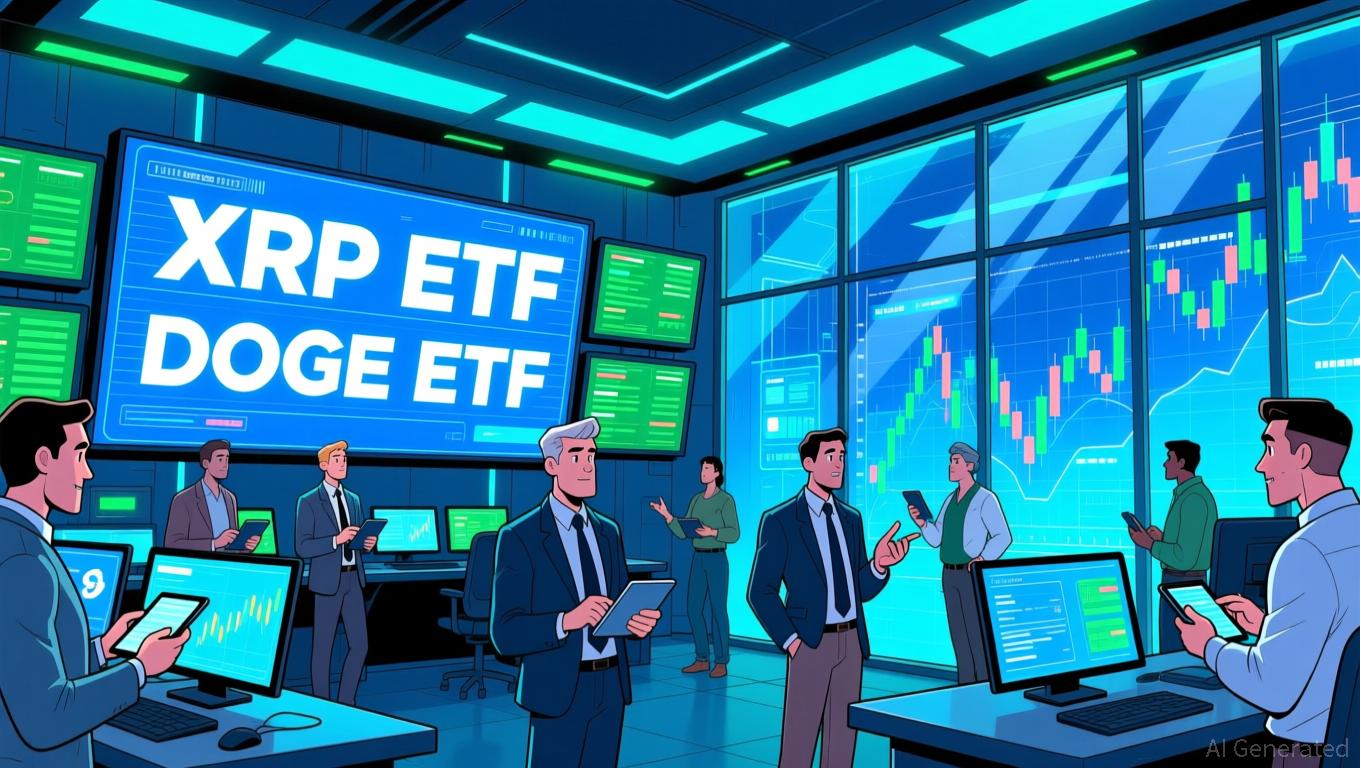Blockchain’s Defense Dilemma: Tackling Present-Day Attacks and the Emerging Quantum Challenge
- Port3 Network suffered a $14.45M loss after a hacker exploited a BridgeIn protocol flaw to mint and dump 162.75M PORT3 tokens, triggering an 82% price crash. - The attacker burned 837.25M tokens post-sale, while Port3 halted liquidity and deposits to contain the damage, though the token remains at $0.0086. - QANplatform's quantum-resistant QAN XLINK protocol passed a Hacken audit, addressing long-term risks as 65% of Ethereum addresses face quantum vulnerability. - The incident highlights DeFi's dual thr
Port3 Network, a decentralized AI data layer initiative, has reported a major security incident that led to an 82% drop in the value of its PORT3 token. On November 23, the project revealed that a hacker exploited a flaw in the BridgeIn protocol, allowing them to create an extra 1 billion PORT3 tokens. These tokens were quickly sold off in liquidity pools before being destroyed. As a result, the token's price crashed from $0.037 to $0.0066 in just a few hours, slashing its market cap from $18.5 million to $4.05 million
Blockchain analysis traced the attacker to wallet address 0xb13a, who generated 1 billion PORT3 tokens and sold 162.75 million of them for 199.56

This exploit in the BridgeIn protocol highlights the persistent dangers within decentralized finance (DeFi), where vulnerabilities in smart contracts can be swiftly exploited. The Port3 team clarified that user assets were not affected, but stressed the necessity for more rigorous security reviews. "This event is a clear warning about the critical role of proactive security in DeFi," a spokesperson mentioned in an internal message.
At the same time, the wider crypto sector remains alert to the risks posed by quantum computing, which could undermine current cryptographic defenses. In a related development, QANplatform—a blockchain project prioritizing quantum-resistant technology—announced that its QAN XLINK protocol successfully completed a thorough audit by cybersecurity firm Hacken. This protocol, which uses lattice-based post-quantum cryptography (PQC) and works with Ethereum-compatible wallets,
Hacken's review confirmed that QAN XLINK can defend against quantum risks by enabling quantum-secure signatures, all without forcing users to switch from their current setups. The audit also pointed out that about 25% of Bitcoin and more than 65% of
The Port3 breach and QANplatform’s advancements in quantum security illustrate the dual challenges confronting blockchain: immediate threats from exploits and the looming issue of technological obsolescence. As Port3’s team works to recover, the incident highlights the pressing need for strong security measures in the industry. For investors, it also serves as a reminder of the high volatility in DeFi tokens, where a single exploit can wipe out millions in value in a matter of hours.
Disclaimer: The content of this article solely reflects the author's opinion and does not represent the platform in any capacity. This article is not intended to serve as a reference for making investment decisions.
You may also like
XRP News Today: SEC Approves Altcoin ETFs, Boosting Institutional Investment in Cryptocurrency
- SEC approves multiple XRP/DOGE ETFs from 21Shares, Franklin Templeton, and Grayscale, signaling growing institutional acceptance of altcoins. - 21Shares' TOXR ETF gains automatic approval via CME CF XRP-Dollar tracking, with Coinbase and BNY Mellon handling custody/admin functions. - Franklin Templeton's XRP Trust removes restrictive clauses to accelerate listing, offering regulated exposure without custody risks from ledger forks. - Grayscale expands crypto offerings with XRP/DOGE ETFs on NYSE, joining

Germany's Solar Turning Point: Spotlight on Legislation, Infrastructure, and Ideological Differences
- Germany's SolarPlus Forum 2025 emphasized legislative clarity, funding innovation, and cross-sector collaboration to accelerate solar adoption amid evolving energy policies. - Outdated regulations and permitting hurdles were highlighted as barriers, with calls to align Bundestag reforms with market demands like gas surcharge removal by 2026. - Cement industry growth (5.7% CAGR) and green innovations support infrastructure needs, though energy cost volatility and compliance challenges persist. - Internati

Polkadot Latest Updates: ECB Raises Concerns: Cryptocurrency and Stock Market Downturns Resemble Dot-Com Bubble Threats
- ECB warns U.S. equity/crypto corrections threaten stability, urging central banks to retain rate-cut flexibility amid market volatility. - JPMorgan links crypto ETF outflows to retail investor behavior, noting $4B November sales contrast with $96B equity ETF inflows. - U.S. Treasury downplays recession risks, citing 2026 growth optimism despite shutdown impacts and services-driven inflation. - MSCI highlights tech valuation risks akin to dot-com era, while DeFi faces $12B liquidity crisis with 95% capita

Novartis Increases 2030 Growth Projections Despite Analysts' Concerns About Patent Threats
- Novartis raised 2030 sales growth targets to 5-6% annually, driven by high peak sales expectations for oncology drugs Kisqali and Scemblix. - CEO Vas Narasimhan highlighted eight de-risked drugs with $3-10B peak potential, but analysts warned of patent expirations and uncertain pipeline progress beyond 2030. - Shares rose 0.5% post-announcement, while Exact Sciences surged 17% on its $105/share acquisition by Abbott and Samsung Biologics saw a 71% valuation re-rating after spin-off. - J.P. Morgan caution
